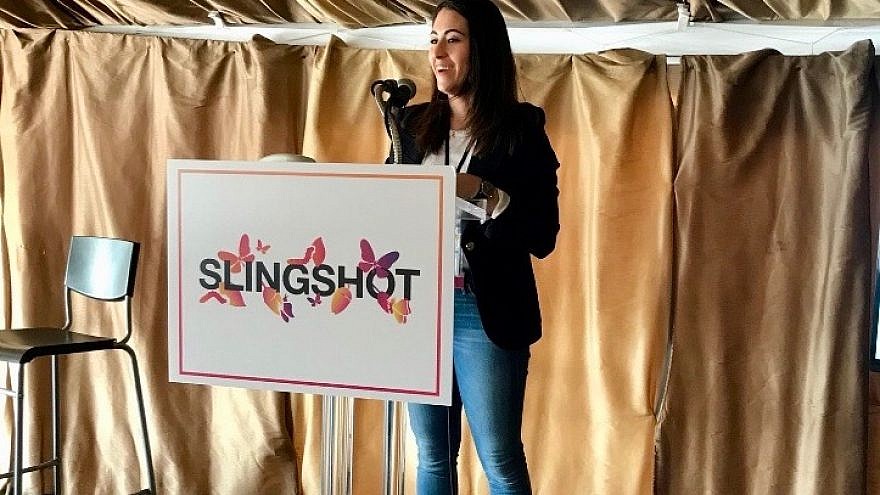Giving has been part of New Yorker Sarah Rueven’s life since she can remember. In fact, Rueven recalls her grandparents and her parents teaching by both word and example what a powerful force that philanthropy can be in making the world a better place.
But, rather than bringing them into the family foundation, her parents encouraged their three children to start their own. “They wanted us to think for ourselves and invest in causes we feel passionate about,” says Rueven who, at 30, chairs the board of Slingshot, a group focused on innovative giving for young Jews. “And, though we still support many of the big organizations, like other younger donors, my husband and I also tend to take a little more risk, giving to smaller and newer organizations that we believe can make real change.”
Indeed, if the average donor to Jewish causes looked in the mirror a generation ago, he or she would have seen someone very different from the image staring back at them now.
If a new report is to be believed, then today’s reflection looks a bit wealthier and more committed to promoting Jewish engagement than before. And it’s also beginning to appear a bit younger, as well as somewhat more female.
These are among the trends unearthed by “Giving Jewish: How Big Funders Have Transformed American Jewish Philanthropy,” recently released by the AVI CHAI Foundation. The goal of the study was an ambitious one: putting its arms around the changing topography of Jewish giving, a nearly $6 billion-a-year enterprise.
What lead researcher Dr. Jack Wertheimer and his team discovered is that the 21st-century Jewish world tends to rely more on fewer donors and those with deeper pockets than in the past. They also found that this individual is more likely to strike out on his or her own, following a passion that often focuses on increasing Jewish engagement versus throwing their lot in with the community-chest concept represented by federations and other mega-charitable organizations.
“Donors want to know that their gifts have genuine impact,” says Wertheimer, professor of American Jewish History at the Jewish Theological Seminary and a maven in the field of Jewish philanthropy. “Big givers do not blindly assume their gifts are succeeding. With the prominence now of professionally staffed foundations, they are measuring and monitoring their gifts very closely.”
A case in point: The Nathan Cummings Foundation was professionalized in 1985 after the death of its founder food mogul (think Sara Lee) Nathan Cummings. Today, the foundation’s giving (about $23 million minus investment expenses and overhead) leans more towards the arenas of social justice and environmental issues than in his grandfather’s day, says James Cummings of Los Angeles, who is 70. “He left it open so our family is free to interpret his legacy in ways that are meaningful to us. Is it Jewish? If caring for the world and peaceful coexistence are Jewish causes, I would say 100 percent of our giving is Jewish.”
‘A greater voice in how funds are directed’
Among the results of the study was the emergence of women, millennials, and to a lesser extent, the Orthodox, who are all gaining seats at the Jewish philanthropic table.
Reflecting their increased leadership in the larger culture, women have stepped into more decision-making roles in Jewish philanthropy, the study showed. Indeed, 51 percent of foundations are now headed by women.
“Some are inheriting the job from parents or husbands; others are taking it on themselves,” says Wertheimer. “Either way, they’re having a greater voice in how the funds are directed than ever before.”
Millennials like Sarah Rueven are also bringing their younger sensibilities to the giving process. The Slingshot Fund she chairs is a peer giving network that produces an annual “Resource Guide to Jewish Innovation,” showcasing innovative Jewish programs and organizations.
“Many of the young Jews I work with are inheriting wealth from their families. Others run their own businesses,” says Slingshot executive director Stefanie Rhodes. “They don’t want to wait till the baton is passed. They are looking for ways to have an impact today.”
And many Orthodox donors who have traditionally given to synagogues, yeshivahs, day schools and elder care are also emerging as major givers, according to the study.
“Not in such numbers as women or millennials, but we see them coming forward in areas like haredi employment, even though they still tend to keep their giving more local,” says Andres Spokoiny, president of the Jewish Funders Network. “And their giving is far more likely to be Jewish than secular.”
‘The freedom to innovate’
But this snapshot of Jewish philanthropy also raises some disturbing questions, argues historian Jonathan Sarna, author of numerous books on American Jews, and the Joseph H. and Belle R. Braun Professor of American Jewish History at Brandeis University.
“To me, the most important piece is that Jewish philanthropy is less and less a communal enterprise,” he says. “Not that long ago, federations counted not only the money raised but also the number of donors, and ‘Super Sunday’ was like Election Day. Everybody got called, promoting a sense of community purpose.”
Though he understands that federations’ limited resources are better spent cultivating the $20,000 gift than the $20 one, Sarna says that “by focusing on those with substantial means, we’ve lost something, leaving many Jews feeling disenfranchised.”
It is equally true, however, that mega-donors acting alone have the freedom to innovate that larger organizations don’t, adds Sarna. “The Jewish world is stronger for programs like Birthright, Moishe House and PJ Library—all of which, as they grew, were able to attract greater communal support.”
“It’s hard for federations, which need to support institutions that aren’t as sexy as innovative programs,” he says. “But if they don’t support Jewish education, and the Jewish poor and elderly, who will?” And some of these “engagement” programs, he notes, are light on Jewish content and heavy on socializing. There is also concern that younger Jews may lack their parents’ and grandparents’ attachment to Israel—an important line item for federations.
“It’s true that increasingly dollars are coming from a small pool of donors at the same time federations are absolutely devoted to bringing the community together,” says Rabbi Marc Baker, 42, who has been tapped to replace Barry Shrage, 70, as the new president of Boston’s federation, Combined Jewish Philanthropies. (Shrage has led the organization for 31 years.) “We need to continue to work hard to hear the voices of the various parts of the community while at the same time find even more creative ways to bring in their voices, their time, talents and their money to both engage and empower.”
In fact, says Yossi Prager, AVI CHAI’s North American executive director, “we need to remember that a third of all Jewish charitable giving still comes through the federation system, which I believe will continue to strengthen Jewish life in the U.S. and elsewhere. For supporting the bread-and-butter of Jewish community—the schools and the synagogues, eldercare and Israel—local donors are heroes of Jewish life.”
And the study also points to a healthy and hopeful trend, adds Spokoiny. “Many of these innovative and independent programs, like PJ Library and Moishe House, are actually now sophisticated and creative partnerships with local funders,” he says “The federations and other big organizations are able to get onboard once the model is proven, and these partnerships allow the programs a much bigger impact.”
Prager sees the big picture. “As Jack reports, there’s been a huge emphasis on the innovation by the largest givers and on engagement, which is important because more and more Jews are growing up with less and less Jewish learning. But,” he adds, “we need to make sure these programs have ongoing robust Jewish content, rather than episodic social interaction.”
The study is destined for success, he believes, “if it starts funders and leaders talking about how philanthropy can play even more strategic, impactful and supportive roles in creating Jewish life, and furthering Jewish engagement and education.”


























